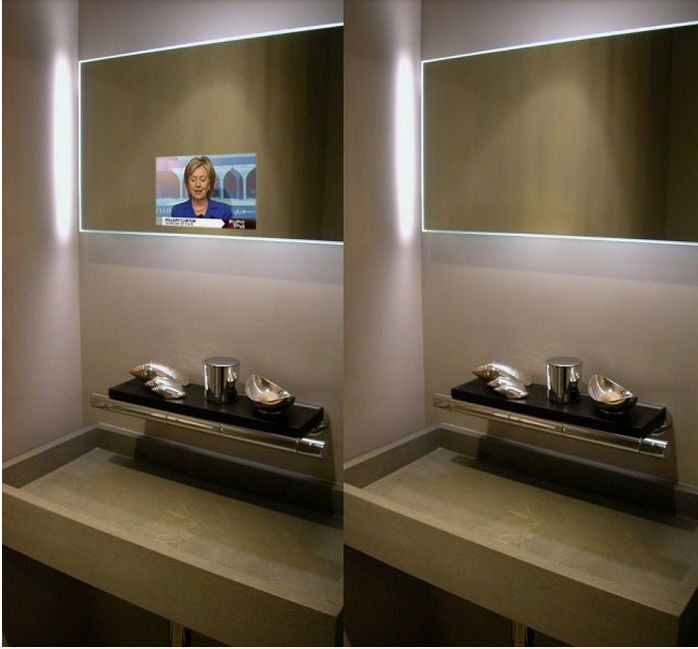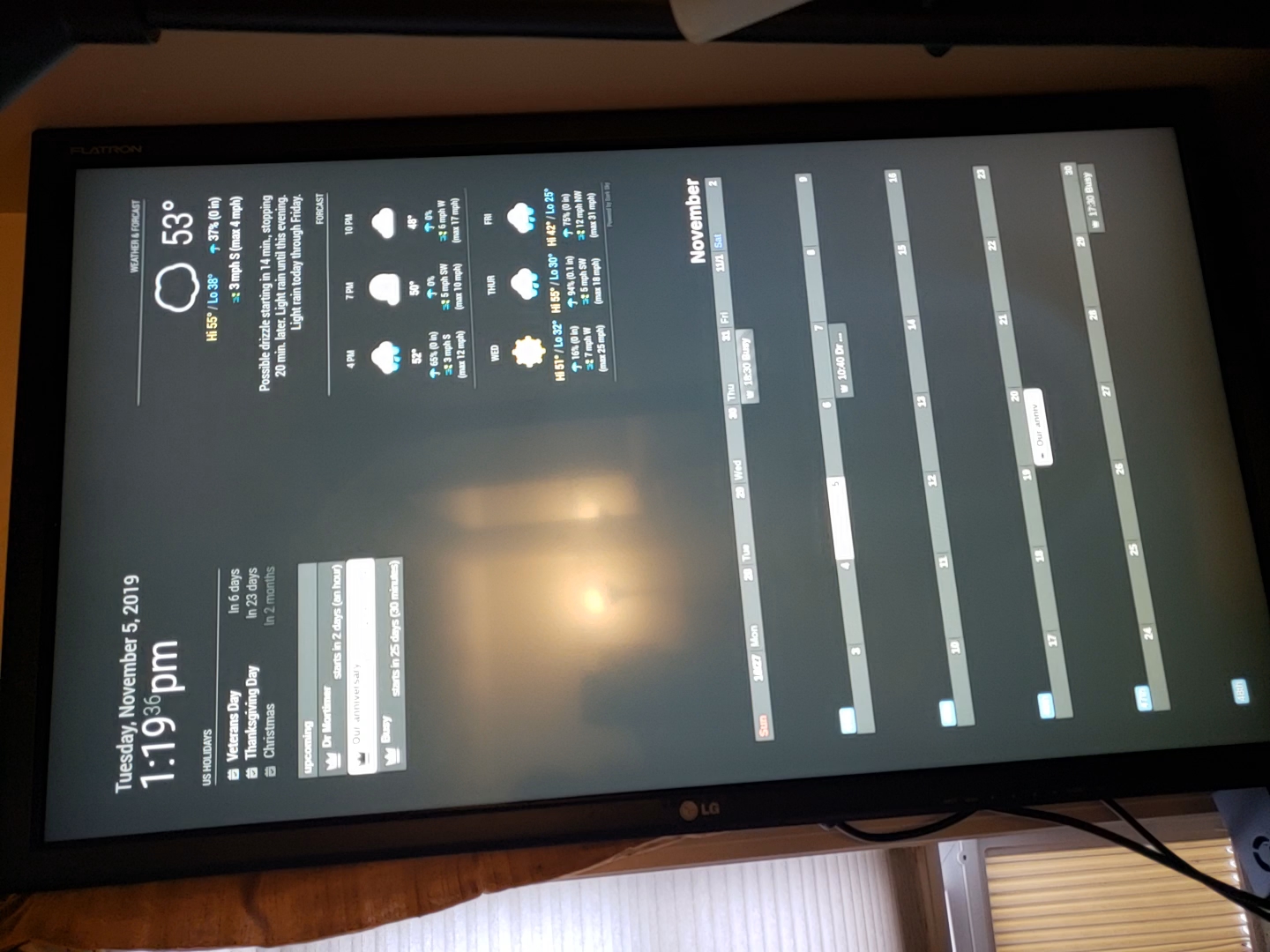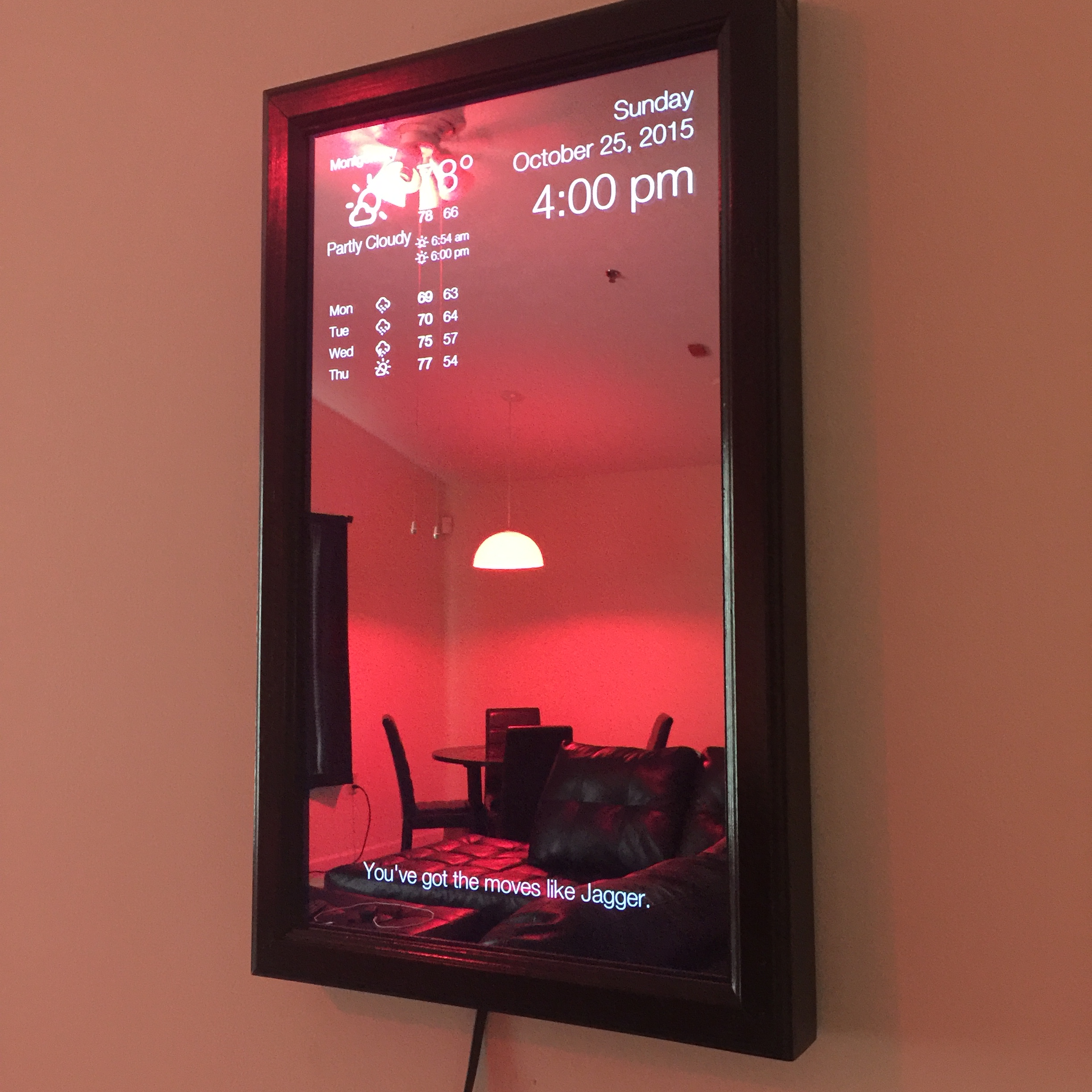

- #Magic mirror project install
- #Magic mirror project software
- #Magic mirror project code
- #Magic mirror project tv

You’ll want to look for seams along the edge to pry apart, and every step of the way try to be gentle. Every monitor is different, so we can’t give exact instructions here. If you plan to remove the frame from your monitor, you’ll want to do that now. The size of your monitor determines the size of your glass and the length and width of the wood you need. The first step to building your frame starts with your monitor. When completed, the structure might resemble a very shallow medicine cabinet. Then you’ll add a simple box to hold the mirror, monitor, Raspberry Pi, and cabling.

To start, you’re going to make a basic frame (like the one you might find hanging on your wall). Hook and loop sandpaper in 80, 120, and 220 grits.

These are not necessary, but they’ll help: How much wood and how wide depends on your monitor (see more in building the frame.)įor a more straightforward build, we have a few advanced options. You’ll also want something thin like plywood to make the back of the box if you aren’t hanging the frame. Wood to build the frame and box: We recommend hardwood like Maple or Walnut at least one inch thick.Add a vapor filter if you’re applying polyurethane without ventilation. A ruler or other straight edge (for drawing straight lines).A miter saw (or handsaw and protractor).Sandpaper in 80, 120, and 220 grit (omit 220 if you decide to paint).Wood filler (if staining, get stainable wood filler).The product we linked on Amazon is a generic size, but we had good luck ordering from a local glass supplier. Two-way Glass: Your glass should be a little larger than the dimensions of your monitor.It’s also helpful (but not necessary) to remove the frame from the monitor. Something thinner and lighter is better, but this monitor by Sceptre would work. A monitor: Preferably at least 24 inches, and one you don’t care about losing.To get started you’ll need the following: If you have a friend who owns some, ask if you can borrow them. And remember, you don’t have to buy the tools. But because we had everything on hand except the glass and wood, we only spent $140. If you bought every item in the following list, you’d spend around $700. The Materials You’ll Needĭepending on what you already have, this project can either be inexpensive or expensive. You’ll spend about three to five hours actively working on the frame and installing the software.Īnd we’ll show you exactly how. The longest parts are passive, like waiting for glue and stain to dry.
#Magic mirror project code
But even someone with little to no experience with woodworking and code can build this DIY project with a bit of patience in a weekend or two.
#Magic mirror project software
The harder parts are creating the frame box, setting up the Raspberry Pi, and then customizing the software to show your preferred information. Installing the software is easy-it requires just one line of code. Once installed, you can customize it to show your calendar, weather, news, and more. Michael and other contributors have created an open-source Magic Mirror platform you can install.
#Magic mirror project tv
Inside the box, you’ll place one-way glass (often seen on TV in police dramas), a monitor, a Raspberry Pi, and the cables necessary to power your setup. The idea is pretty simple you’ll build a frame and box. Smart mirrors have been around awhile, and the most prominent version comes from Michael Teeuw. The DIY Magic Mirror is licensed under a Creative Commons Attribution-Noncommercial-Share Alike 3.0 United States License.Beautiful, Configurable, and Custom-Built Josh Hendrickson / How-To Geek Grand Prize Winner of the Instructables Halloween Contest, Wired Interview
#Magic mirror project install
Plug the open source Magic Mirror Sensor Hub into a PC USB port and install the DIY Magic Mirror Software. It requires set up and configuration time and is not a plug and play product. IMPORTANT: The DIY Magic Mirror project requires some Maker/Electronics know how and is not meant for non-technical users. Featuring four characters, each character responds to the sensor inputs with its own personality. The Magic Mirror plays animations based on input from various sensors which you choose based on your installation type. * Princess, Pirate, Halloween, and Insult Characters, Add your own Characters * Features Breathalyzer, Photobooth, Weather Forecast, Stock Performance, LED Control, Sends X-10 Commands


 0 kommentar(er)
0 kommentar(er)
